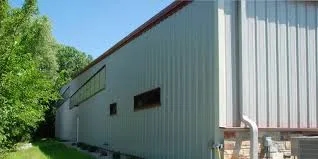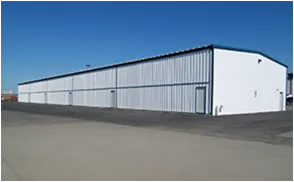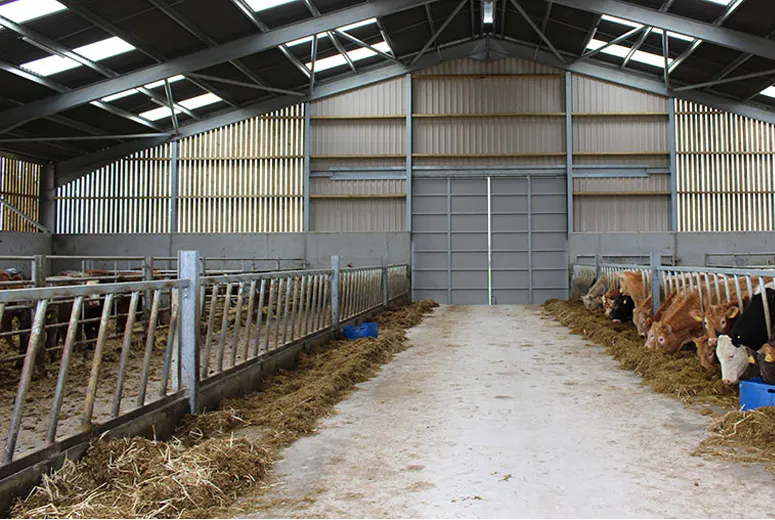choosing a duvet insert
...
2025-08-16 07:57
2953
In today's fast-paced world, sleep is often overlooked as a priority. However, it plays a crucial role in our overall health and well-being. One simple yet effective way to enhance your sleep experience is by investing in a lightweight duvet insert. This article delves into the benefits of using a lightweight duvet insert and provides tips on choosing the right one for your needs.
...
2025-08-16 07:49
2748
When it comes to the best fabrics for bed sheets, cotton and linen are the undisputed frontrunners. The reason for their popularity is that both are natural fibers and possess qualities such as high absorbency and breathability that make them the perfect choice for bedding. But determining which one is best for you is not as easy as it may seem. Picking the right set of bedsheets is a personal decision that has a lot to do with the kind of sleeper you are and the aesthetics you’d like your bedroom to evoke. The textiles manufactured from cotton and linen deliver two distinct experiences both in terms of style and feel.
...
2025-08-16 07:44
2523
Guest satisfaction is a top priority for hotels, and providing comfortable bath towels is just one way to enhance the guest experience. By offering the right size, quality, and design of bath towels, hotels can ensure that guests feel pampered and well-cared for during their stay.
...
2025-08-16 07:22
2855
In today's fast-paced world, sleep is often overlooked as a priority. However, it plays a crucial role in our overall health and well-being. One simple yet effective way to enhance your sleep experience is by investing in a lightweight duvet insert. This article delves into the benefits of using a lightweight duvet insert and provides tips on choosing the right one for your needs.
When it comes to the best fabrics for bed sheets, cotton and linen are the undisputed frontrunners. The reason for their popularity is that both are natural fibers and possess qualities such as high absorbency and breathability that make them the perfect choice for bedding. But determining which one is best for you is not as easy as it may seem. Picking the right set of bedsheets is a personal decision that has a lot to do with the kind of sleeper you are and the aesthetics you’d like your bedroom to evoke. The textiles manufactured from cotton and linen deliver two distinct experiences both in terms of style and feel.
Guest satisfaction is a top priority for hotels, and providing comfortable bath towels is just one way to enhance the guest experience. By offering the right size, quality, and design of bath towels, hotels can ensure that guests feel pampered and well-cared for during their stay.
...
2025-08-16 06:58
1020
Another great feature of DreamFit sheets is their soft and breathable fabric. Made from high-quality microfiber, these sheets are incredibly comfortable to sleep on and help regulate your body temperature for optimal comfort throughout the night Made from high-quality microfiber, these sheets are incredibly comfortable to sleep on and help regulate your body temperature for optimal comfort throughout the night Made from high-quality microfiber, these sheets are incredibly comfortable to sleep on and help regulate your body temperature for optimal comfort throughout the night Made from high-quality microfiber, these sheets are incredibly comfortable to sleep on and help regulate your body temperature for optimal comfort throughout the night
Made from high-quality microfiber, these sheets are incredibly comfortable to sleep on and help regulate your body temperature for optimal comfort throughout the night Made from high-quality microfiber, these sheets are incredibly comfortable to sleep on and help regulate your body temperature for optimal comfort throughout the night dreamfit sheets for adjustable beds. The fabric is also easy to care for, making it a practical choice for busy lifestyles.
dreamfit sheets for adjustable beds. The fabric is also easy to care for, making it a practical choice for busy lifestyles.
...
2025-08-16 06:13
1562
From a practical standpoint, this protective layer significantly extends the lifespan of your mattress
...
2025-08-16 06:12
2660
Another great feature of DreamFit sheets is their soft and breathable fabric. Made from high-quality microfiber, these sheets are incredibly comfortable to sleep on and help regulate your body temperature for optimal comfort throughout the night Made from high-quality microfiber, these sheets are incredibly comfortable to sleep on and help regulate your body temperature for optimal comfort throughout the night Made from high-quality microfiber, these sheets are incredibly comfortable to sleep on and help regulate your body temperature for optimal comfort throughout the night Made from high-quality microfiber, these sheets are incredibly comfortable to sleep on and help regulate your body temperature for optimal comfort throughout the night
Made from high-quality microfiber, these sheets are incredibly comfortable to sleep on and help regulate your body temperature for optimal comfort throughout the night Made from high-quality microfiber, these sheets are incredibly comfortable to sleep on and help regulate your body temperature for optimal comfort throughout the night dreamfit sheets for adjustable beds. The fabric is also easy to care for, making it a practical choice for busy lifestyles.
dreamfit sheets for adjustable beds. The fabric is also easy to care for, making it a practical choice for busy lifestyles.
From a practical standpoint, this protective layer significantly extends the lifespan of your mattress
In addition to storage and shelter, agricultural buildings contribute significantly to the operational efficiency of farms. Workshops and tool storage buildings allow for organized maintenance and repair of equipment, keeping farms running smoothly. Processing facilities enable farmers to add value to their products, such as converting raw milk into cheese, which can result in increased profitability. The layout and design of these buildings can greatly influence workflow, making it essential to consider factors such as accessibility and space utilization during their planning and construction.
1. Local Regulations Always check your local building codes and zoning regulations. Some areas may require permits for new structures, and it’s essential to understand the rules to avoid potential fines or removal.
When it comes to building or renovating a shed, selecting the right door frame is a critical decision that impacts both functionality and aesthetics. Among the various options available, metal shed door frames stand out as a popular choice due to their numerous advantages. This article delves into the benefits, features, and considerations associated with metal shed door frames, making them an excellent option for outdoor structures.
In addition to its structural benefits, light gauge steel framing contributes to enhanced energy efficiency in homes. The material offers excellent thermal performance when used in conjunction with appropriate insulation. Builders can achieve tight building envelopes, minimizing heat loss and reducing energy consumption. This efficiency is not only favorable for the environment but also aligns with the increasing consumer demand for sustainable and energy-efficient homes.
The aesthetic of the metal garage also plays a significant role in its appeal. Often grungy, dimly lit, and adorned with posters of iconic bands, these spaces reflect the authenticity of the music they harbor. The sound of metal reverberating off concrete walls, coupled with the smell of sweat and determination, creates an atmosphere that is both electrifying and inspiring. It is a place where the spirit of rock and roll is palpable, reminding all who enter that music is not just a hobby; it is a way of life.
4. Labor Costs
In an era where sustainability is a key consideration, angle iron presents an environmentally friendly option for shed construction. Steel, including angle iron, is 100% recyclable, reducing the environmental impact associated with manufacturing new materials. Additionally, using steel reduces the demand for timber, contributing to the conservation of forests and promoting sustainable building practices.
In recent years, the construction industry has witnessed significant shifts in building materials, driven by a need for sustainability, durability, and efficiency
. Among these materials, light gauge steel framing has emerged as a leading option for residential construction. This innovative approach offers a host of advantages, making it popular among builders and homeowners alike.Space Efficiency

Sustainability is another aspect where modern agricultural buildings make a difference. Innovative designs and construction materials are increasingly being utilized to create structures that reduce energy consumption and environmental impact. For example, solar panels can be integrated into barn roofs to provide renewable energy for farm operations. Rainwater harvesting systems can be implemented in agricultural buildings to ensure a steady water supply for irrigation and livestock needs. These sustainable practices not only contribute to the profitability of farming operations but also help protect natural resources for future generations.
One of the primary advantages of large metal barns is their durability. Unlike traditional wooden barns, which may suffer from rot, insect infestations, and environmental wear-and-tear over time, metal barns are built to last. Constructed from high-quality steel, they can withstand harsh weather conditions, including heavy snowfall, strong winds, and relentless rain. This resilience makes them particularly appealing for farmers who need reliable structures for their livestock and equipment.
One of the most notable advantages of large steel barns is their versatility. Farmers can customize the design of these barns to suit their specific requirements, accommodating various agricultural activities. Whether it's housing livestock, storing equipment, or providing shelter for crops, these steel structures can be tailored to meet the unique demands of any farming operation. Additionally, large open spaces enable efficient movement and storage, optimizing workflows and enhancing productivity on the farm.
Investing in a large metal barn can be a game-changer, providing the necessary space and durability for your requirements. As you consider your options, keep in mind the benefits these structures offer and the factors influencing your decision. With the right approach, a large metal barn can serve you and your needs for years to come. Whether it’s for agricultural use, storage, or recreational purposes, these barns present a practical and efficient solution.
Steel frame construction is becoming increasingly popular for several compelling reasons. First and foremost, steel is an incredibly strong and resilient material. Its ability to withstand harsh weather conditions, including heavy snowfall, high winds, and even earthquakes, makes it an ideal choice for building in various climates. Unlike wood, steel does not warp, crack, or become infested with pests, ensuring that a steel frame barn house can stand the test of time.
Understanding Prefab Steel Buildings
Modern Advancements in Industrial Shed Frames


